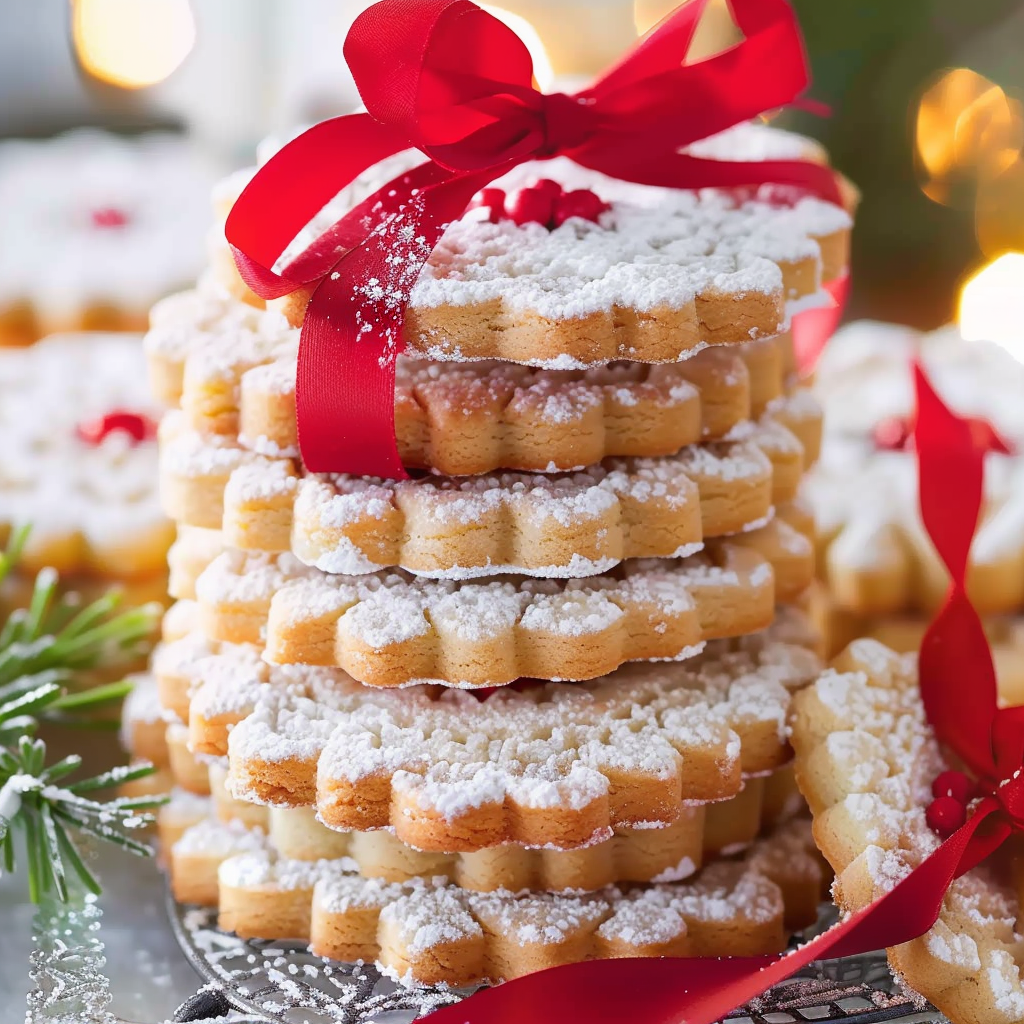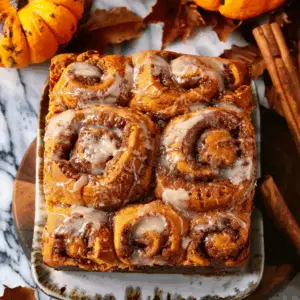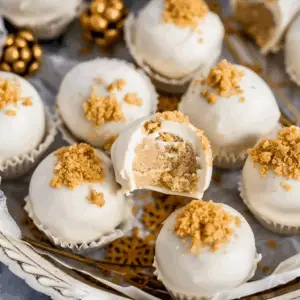Linzer Cookies
Linzer cookies are a timeless treat that combines buttery richness with fruity sweetness, making them a go-to dessert for holidays, celebrations, or cozy everyday indulgence. These elegant sandwich cookies are made from a spiced almond or butter dough, filled with jam, and finished with a light dusting of powdered sugar. Their signature design—with a cut-out window that reveals the jewel-toned filling beneath—makes them both delicious and beautiful.
Originally derived from the traditional Linzer torte, a dessert that hails from Austria, Linzer cookies have traveled across generations and continents. You can learn more about their origins in the history of the Linzer torte, which first appeared in written form in the 17th century in Linz. Over time, this torte evolved into the portable, festive cookies we recognize today. While they are especially popular during the Christmas season, their classic flavor and customizable nature have made them a year-round favorite.
Whether you’re an experienced baker or just beginning your culinary journey, Linzer cookies are surprisingly easy to make with a few simple ingredients. They are ideal for showcasing seasonal jams, making them incredibly versatile. As part of the rich world of Austrian desserts, these cookies reflect the European tradition of combining flavor and artistry in every bite.
From holiday cookie platters to wedding dessert tables, Linzer cookies offer the perfect combination of flavor, texture, and presentation. This guide will walk you through everything you need to know to make these delightful treats from scratch, offering tips, variations, and expert baking insights along the way.

The History of Linzer Cookies
The origins of Linzer cookies trace back to the celebrated Linzer torte, one of the oldest known cakes in European culinary history. This iconic dessert, made with nuts, spices, and fruit preserves, inspired the smaller, more portable cookie version that became a staple in holiday baking traditions. Over time, bakers adapted the flavors and textures of the original torte into a refined cookie format that highlights the same rich sweetness and aromatic spices.
As the recipe spread beyond Austria, the cookies evolved with regional preferences. Their connection to classic European baking is evident in the use of traditional ingredients like ground nuts, jam, and warm spices. To better understand the preserved fruit element central to their signature filling, see the overview of fruit preserves. Many modern variations also pair the dough with bright fillings such as those found in raspberry jam, helping preserve the authentic flavor profile.
Today, Linzer cookies remain a beloved confection for holidays, celebrations, and year-round treats. Their layered construction echoes the enduring appeal of European pastries while offering room for creativity, whether through alternative fillings, decorative shapes, or contemporary twists on the classic formula.
Essential Ingredients and Their Purpose
Every great batch of Linzer cookies starts with high-quality, balanced ingredients that create a buttery, delicate texture and a flavorful finish. Each component plays a specific role in achieving the perfect result—from structure to aroma and sweetness.
-
All-purpose flour is the structural base of the cookie dough. It provides the necessary body while allowing the cookies to remain tender and crumbly. Learn more about the properties of all-purpose flour and how it compares to other types of flour in baking.
-
Unsalted butter is essential for a rich, melt-in-your-mouth texture. It’s best to use butter that’s fully softened but not melted to properly cream with the sugar.
-
Granulated sugar adds sweetness and helps aerate the dough when creamed with butter, contributing to the light texture.
-
Egg binds the dough and adds moisture, making the cookies easier to roll and shape.
-
Vanilla and almond extracts enhance the flavor with warm and nutty undertones. Almond extract, in particular, gives the cookies their traditional flavor identity.
-
Ground cinnamon adds subtle spice that balances the sweetness of the jam and sugar.
-
Salt intensifies the flavors and keeps the cookies from tasting flat.
For the filling, raspberry jam is the classic choice due to its tart contrast against the sweet cookie layers. It also complements the almond extract beautifully. For bakers looking for variety, check out these types of fruit preserves that can offer new flavor profiles while staying true to the original style.
Dusting the tops with powdered sugar after assembly adds a snowy visual effect and a hint of sweetness. A great tip is to only dust the top cookies (the ones with cut-outs) before sandwiching them, which keeps the jam visible and prevents sogginess.
For readers seeking natural or healthier options, you can explore homemade fillings like chia-based preserves—Pinterest has a great guide to making chia jam that pairs well with Linzer cookies while offering added nutrients.
These carefully chosen ingredients work together to deliver cookies that are as delightful in taste as they are in presentation.
Step-by-Step Instructions with Pro Tips
Making Linzer cookies from scratch may seem complex at first glance, but following the process step by step ensures beautiful and delicious results. Here’s how to do it with expert tips for success:
-
Preheat and prep: Begin by preheating your oven to 350°F (175°C). Line two baking sheets with parchment paper to prevent sticking and ensure even browning.
-
Mix dry ingredients: In a medium bowl, whisk together 2 cups of all-purpose flour, ½ teaspoon of ground cinnamon, and ¼ teaspoon of salt. These dry components provide the structural base and warm flavor of the cookies.
-
Cream butter and sugar: In a large mixing bowl, use a hand or stand mixer to beat ¾ cup of unsalted butter and ½ cup of granulated sugar until light and fluffy. This aeration helps create a tender cookie texture.
-
Add wet ingredients: Beat in 1 egg, 1 teaspoon of vanilla extract, and ½ teaspoon of almond extract. The egg binds the dough, while the extracts add signature depth. If you want to experiment with dairy-free alternatives, you can find useful ideas from vegan baking swaps.
-
Combine and form dough: Gradually add the dry ingredients to the wet mixture and mix until a soft dough forms. Divide the dough into two equal portions, flatten into disks, and wrap them in plastic wrap.
-
Chill the dough: Refrigerate the dough for at least 30 minutes. This step is crucial—it firms up the butter and prevents the cookies from spreading during baking.
-
Roll and cut: On a lightly floured surface, roll out one disk of dough to about 1/8-inch thickness. Use a round or fluted cookie cutter to cut out shapes. For half of the cookies, use a small shape (heart, star, or tree) to cut out centers. Check out creative cookie cutter designs for seasonal inspiration.
-
Bake and cool: Arrange cookies on prepared sheets and bake for 10–12 minutes, or until the edges are lightly golden. Allow them to cool completely on a wire rack before filling.
-
Add filling: Spread ½ teaspoon of raspberry jam on the flat side of each whole cookie. Top with a cut-out cookie and press gently to create a sandwich.
-
Dust with powdered sugar: Sift powdered sugar over the tops of the assembled cookies. For best results, dust only the top cookie before assembly to prevent the jam from absorbing the sugar.
Pro Tip: If the dough becomes too soft while cutting, return it to the fridge for 10–15 minutes. Chilling is key to clean cuts and maintaining shape during baking.
These instructions balance precision with flexibility, allowing bakers to create Linzer cookies that are both beautiful and bursting with flavor.
Choosing the Right Jam and Flavor Variations
Linzer cookies are traditionally filled with raspberry jam, but one of the joys of baking them is experimenting with other delicious options. The right jam enhances the flavor, appearance, and texture of your cookies.
Classic Jam Choices:
-
Raspberry jam: The traditional and most popular choice. Its tartness balances the buttery sweetness of the cookie.
-
Apricot jam: Adds a sunny color and a slightly tangy-sweet flavor.
-
Strawberry or cherry jam: Brighter and sweeter, ideal for Valentine’s Day or spring celebrations.
Unique Twists:
-
Lemon curd: For a zesty, citrusy variation that contrasts beautifully with the almond flavor.
-
Blackberry or fig preserves: Adds a rich, deep fruit flavor perfect for autumn.
-
Chia seed jam: A healthier alternative. Try this Pinterest chia jam guide for homemade recipes.
Nutty or Creamy Fillings:
-
Nutella or hazelnut spread: Delicious for chocolate lovers.
-
Almond butter and honey mix: A refined, less sweet option for a gourmet touch.
Match your filling to the occasion. Raspberry and apricot are perfect for Christmas, while lemon or fig jam works well for spring and fall events. With so many possibilities, Linzer cookies become a versatile dessert you can enjoy all year.
Baking Tools You’ll Need
To make professional-quality Linzer cookies, a few essential tools can make all the difference. Here’s what you should have on hand:
-
Rolling pin: Ensures even dough thickness. Consider a rolling pin with thickness rings for precision.
-
Cookie cutters: Use a large round or fluted cutter for the base and a smaller cutter (heart, star, snowflake) for the cut-outs. Pinterest is full of cookie cutter ideas to match seasonal themes.
-
Parchment paper: Prevents sticking and promotes even baking.
-
Wire cooling rack: Allows cookies to cool completely without becoming soggy on the bottom.
-
Offset spatula: Useful for transferring delicate cookies from the baking sheet.
With these tools, you can simplify the baking process and produce cookies that not only taste amazing but also look professionally crafted.

Troubleshooting Common Baking Issues
Even experienced bakers can face challenges when making Linzer cookies. Here’s how to resolve the most common issues:
-
Cookies spread too much: This usually means the dough wasn’t chilled long enough. Always refrigerate for at least 30 minutes before rolling and again after cutting if the dough warms up.
-
Sticky dough: Add a small amount of flour when rolling, or roll between two sheets of parchment paper. Don’t overdo the flour, as it can dry out the dough.
-
Crumbly dough: If the dough breaks apart, knead gently for a few seconds to bring it together. Avoid overmixing to prevent tough cookies.
-
Jam leaks out: Use a thin layer of jam and avoid overfilling. Let the cookies cool completely before assembling to maintain structure.
-
Misaligned sandwiches: Align cookies carefully and use a piping bag or small spoon to control jam placement.
If you’re baking with alternative flours, gluten-free baking tips can help you avoid structural issues. Always test one or two cookies before baking the full batch to make adjustments if needed.
Creative Linzer Cookie Variations
Linzer cookies offer a canvas for culinary creativity. While the classic almond-flavored dough and raspberry jam are timeless, modern bakers enjoy experimenting with flavors, shapes, and dietary adaptations.
Flavorful Dough Variations:
-
Chocolate Linzer cookies: Replace ¼ cup of flour with unsweetened cocoa powder for a rich twist.
-
Citrus zest: Add orange or lemon zest to the dough for a burst of brightness.
-
Spiced dough: Incorporate nutmeg, cloves, or cardamom for a warm, seasonal touch.
Dietary Options:
-
Gluten-free: Use a 1:1 gluten-free baking flour. For support, explore these gluten-free baking tips.
-
Vegan: Swap butter with plant-based alternatives and replace eggs with flaxseed meal. Get inspiration from vegan cuisine guides.
Holiday Shapes and Themes:
-
Christmas: Use star, snowflake, or tree cutouts with red and green jams.
-
Valentine’s Day: Heart shapes with strawberry or cherry jam.
-
Easter: Floral or egg-shaped cutters with lemon or apricot filling.
Linzer cookies are more than a holiday classic—they’re a recipe you can adapt and reinvent for any season or occasion.
Presentation & Gifting Ideas
Few cookies are as visually charming as Linzer cookies, making them perfect for gifting and festive presentations. Here are ideas to impress with both taste and style:
Gifting Ideas:
-
Use metal cookie tins lined with parchment for a traditional look.
-
Wrap cookie stacks in cellophane with ribbon for party favors.
-
Add personalized tags with handwritten notes or cookie descriptions.
For inspiration, browse holiday cookie packaging ideas to make your cookies feel even more special.
Presentation Tips:
-
Arrange cookies on a tiered platter with contrasting shapes and jam colors.
-
Alternate cookie sizes and cut-outs for variety.
-
Add a few sprigs of rosemary or holly to your serving tray for a festive touch.
Pair your cookies with a seasonal drink and your presentation becomes a full experience worth remembering.
Storing and Freezing Linzer Cookies
Proper storage ensures your Linzer cookies remain fresh and flavorful for days—or even weeks.
Room Temperature:
-
Store cookies in an airtight container at room temperature for up to 5 days.
-
Place parchment paper between layers to prevent sticking.
Refrigerator:
-
If your home is humid, store in the fridge to preserve texture. Bring to room temperature before serving.
Freezing:
-
Freeze unassembled cookies for up to 3 months. Thaw, then fill and dust with sugar before serving.
-
Baked and assembled cookies can be frozen, but the jam and sugar may affect texture after thawing.
To preserve a crisp texture, reheat thawed cookies in a 300°F (150°C) oven for 5 minutes before serving.
Pairing Linzer Cookies with Beverages & Desserts
The rich, buttery layers and fruity filling of Linzer cookies pair beautifully with a variety of drinks and desserts. Here are some suggestions for a complete experience:
Beverage Pairings:
-
Black tea: Complements the fruity jam and nutty flavor.
-
Mulled wine: A perfect warm pairing during the holidays.
-
Espresso or cappuccino: The bitter edge balances the cookie’s sweetness.
Dessert Combinations:
-
Serve alongside shortbread or snowball cookies on a holiday platter.
-
Add to a dessert charcuterie board with chocolate truffles and candied nuts.
For other traditional European pairings, explore more Austrian desserts to create an elegant spread.
FAQs – People Also Ask
What is the difference between Linzer cookies and thumbprint cookies?
Linzer cookies are sandwich-style with a cut-out top, while thumbprint cookies are typically round with an indented center filled with jam. Linzers are more delicate and often use spiced or nutty dough.
Can Linzer cookies be made ahead of time?
Yes, you can bake the cookies and store them unassembled for up to 3 days. Assemble them shortly before serving for the best texture.
What is the best jam for Linzer cookies?
Raspberry jam is classic, but apricot, cherry, and lemon curd are also popular. Choose a jam that is thick and not too runny to prevent leaking.
Why do my Linzer cookies get soggy?
Cookies may become soggy if assembled while still warm or if overfilled with jam. Allow them to cool completely and use just enough filling.
How do you keep Linzer cookies from spreading?
Chill the dough thoroughly before baking. You can also chill the cut cookies on the baking sheet for 10 minutes before putting them in the oven.
The Ultimate Guide to Baking Delightful Linzer Cookies
These classic Linzer cookies feature buttery, spiced shortbread-style dough sandwiched around vibrant raspberry jam and dusted with powdered sugar. Perfect for holidays, weddings, and every celebration in between, they combine elegant presentation with melt-in-your-mouth flavor. A beloved Austrian recipe turned worldwide favorite, Linzer cookies are the ultimate festive treat.
- Author: Clara
Ingredients
For the dough:
- 2 cups all-purpose flour
- ½ tsp ground cinnamon
- ¼ tsp salt
- ¾ cup unsalted butter, softened
- ½ cup granulated sugar
- 1 large egg
- 1 tsp vanilla extract
- ½ tsp almond extract
For the filling and topping:
- ½ cup raspberry jam (or your favorite jam)
- Powdered sugar, for dusting
Instructions
- Preheat the oven to 350°F (175°C) and line two baking sheets with parchment paper.
- In a medium bowl, whisk together the flour, cinnamon, and salt.
- In a large bowl, cream the softened butter and granulated sugar until light and fluffy.
- Beat in the egg, vanilla extract, and almond extract until well combined.
- Gradually add the dry ingredients to the wet mixture and mix until a dough forms.
- Divide the dough in half, flatten into disks, and chill in the refrigerator for at least 30 minutes.
- On a lightly floured surface, roll out one disk of dough to about 1/8-inch thickness.
- Use a round or fluted cookie cutter to cut out cookies. Cut out a small shape (like a heart or star) in the center of half of the cookies.
- Place the cookies on the prepared baking sheets and bake for 10-12 minutes, or until the edges are lightly golden. Let cool completely.
- Spread a small amount of jam on the flat side of the whole cookies, then top with the cut-out cookies to form sandwiches.
- Dust the tops with powdered sugar before serving.
Notes
-
For best results, use a thick jam or fruit preserve that won’t run when baked.
-
Always chill your dough for at least 30 minutes to ensure the cookies hold their shape.
-
Only dust the top cookie with powdered sugar to keep the jam center visible.
-
Dough can be made in advance and refrigerated for up to 2 days or frozen for a month.
-
To make gluten-free, substitute with 1:1 gluten-free flour and adjust moisture as needed.



